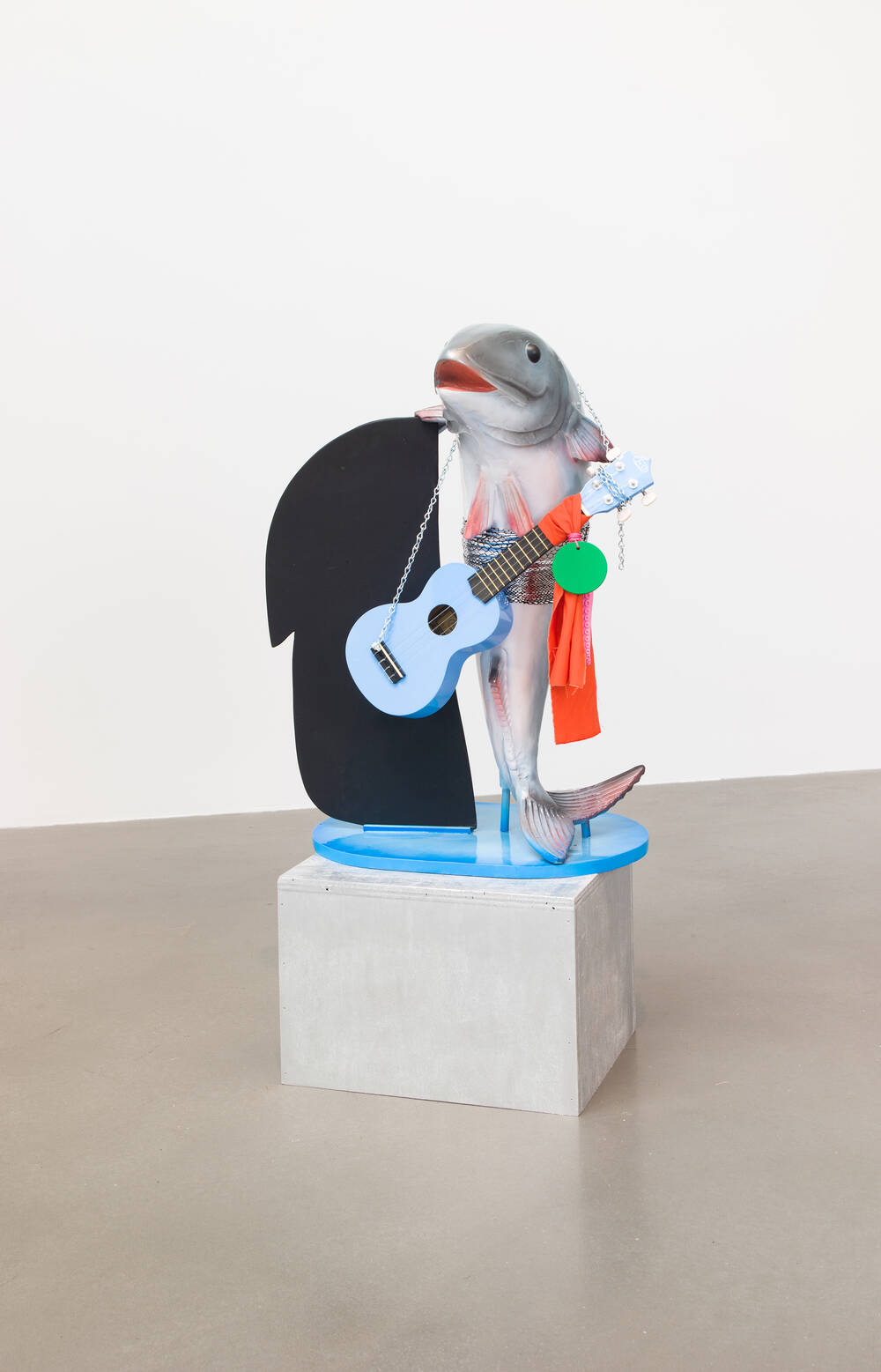The SCHIRN is showing a unique presentation of new and well-known works by COSIMA VON BONIN until June 9.
Cosima von Bonin (b. 1962) creates transformations of the everyday. The SCHIRN is showing a unique presentation of her oeuvre from March 21 to June 9, 2024, for which the artist has combined recent works that have never been shown in Germany with well-known pieces. For her expansive exhibitions, she draws on numerous references from popular culture, as well as from film, fashion, music, and art. Cosima von Bonin brings various players together—exhausted cuddly toys, rockets, soft fences, or comic figures like Daffy Duck and Bambi—to form an ensemble, or a community of social connections. Her artistic strategies are alienation, appropriation, collaboration, and delegation. Around seventy works are on display, including sculptures, installations, and a selection of her distinctive textile canvases, which were sewn together from a variety of fabrics in accordance with the artist’s instructions. Her installations, which initially appear to be colorful and fun, manifest unsettling moments upon closer observation and can evoke conflicting emotions. Oscillating between humor and darkness, playfulness and urgency, fantasy and terrifying reality, the artist is always concerned with contradiction, relationship, and self-reflection.
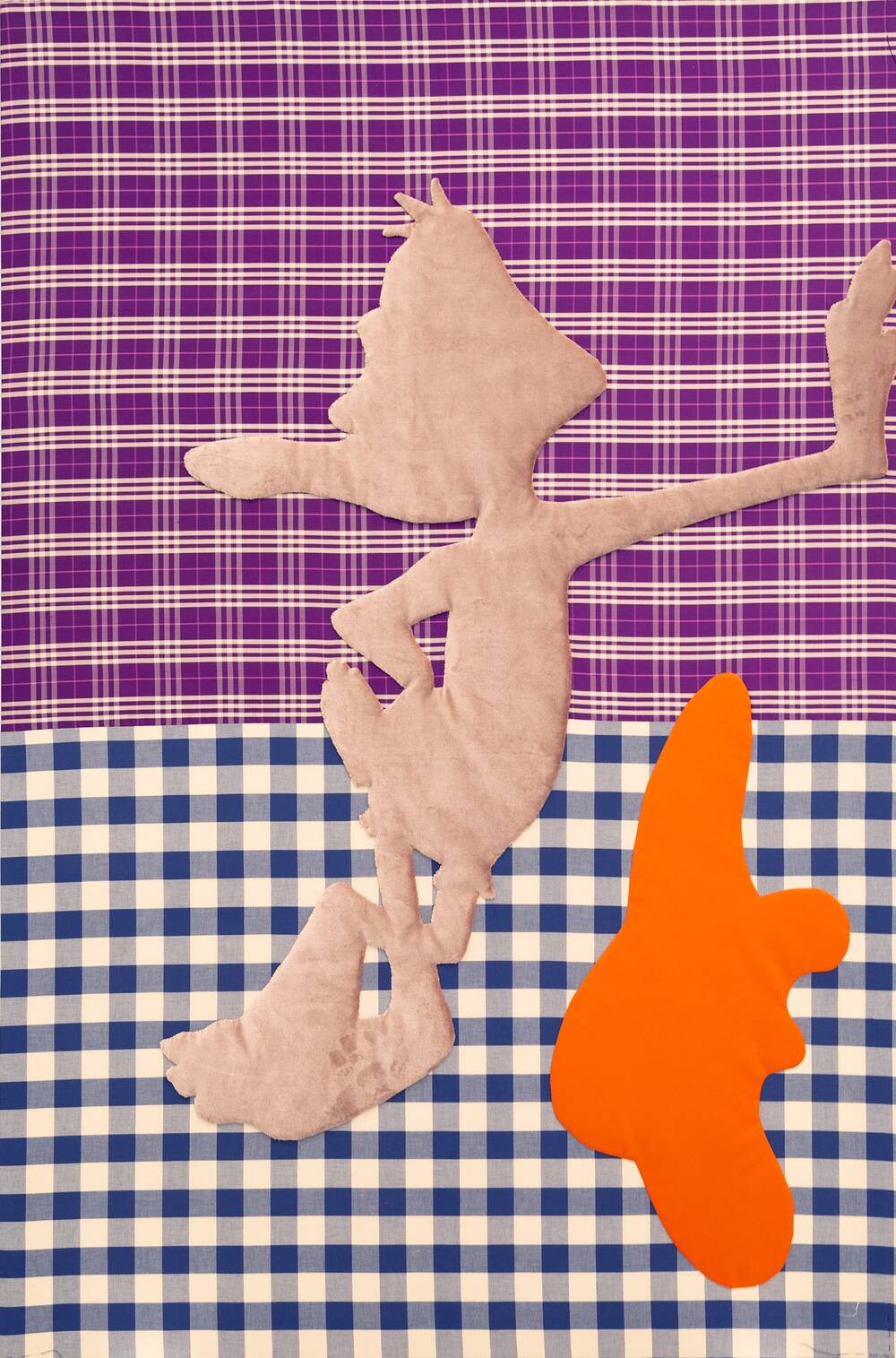
"We are many"
A hallmark of Cosima von Bonin is her diversity of references. Her art is rooted in a broad network that she alludes to in her works or integrates directly into her exhibitions. The references she has acknowledged range from the artists Isa Genzken, Mike Kelley, and Cady Noland to musicians like Rihanna, Britney Spears, and Missy Elliott, as well as role models from TV, literature, and fashion. “We are many” is how she describes her artistic practice, for she overturns traditional notions of authorship. Cosima von Bonin includes technicians, carpenters, and tailors in the process of creating her works. She collaborates with musicians such as Moritz von Oswald and Dirk von Lowtzow and the drag queens Mary Messhausen and proddy produzentin. Her collaborators are also recurring figures, characters, and objects that often appear in her work in variations and series. Like a family, the artist brings them together in the exhibition space on pedestals, displays, and set designs and enables them to interact with each other.
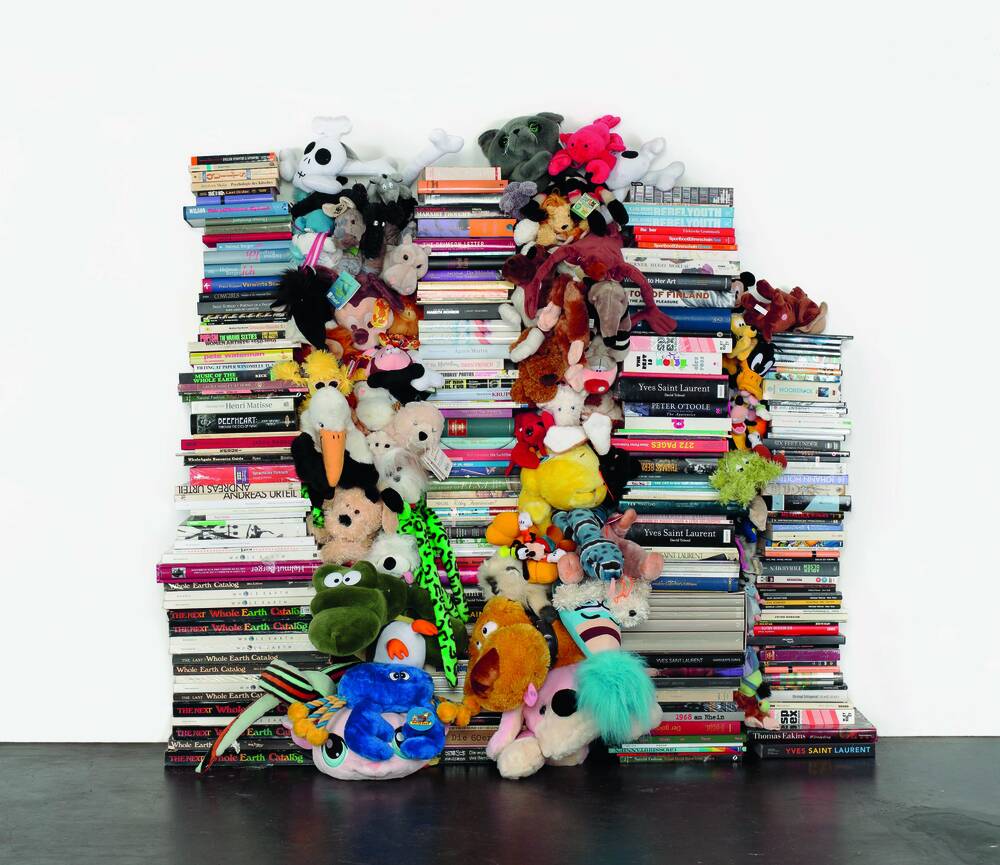
Moments of uncerainty
Cosima von Bonin is presenting sculptures at the SCHIRN made from the most diverse materials and surfaces. Her textile “soft sculptures” allow the small to appear large, the hard soft, and the sweet bitter. They reference works by Dorothea Tanning, Claes Oldenburg, and Mike Kelley. In the very first room of the exhibition, an installation features a giant, cuddly chick sitting on an oversized rocket. In "Open Your Shirt Please 6" (2019), a group of pink pigs lie flat and tired on a stainless steel plater. Cosima von Bonin’s toy-like figures often seem cute at first, before a moment of uncertainty sets in. The chick is slumped over and has vomited on itself, and fetish toys such as handcuffs are resting next to the pigs.
On the walls and recessed into pedestals, the SCHIRN displays textile images mounted on stretcher frames, which Cosima von Bonin calls “Lappen” (rags). They resemble billboards and are reminiscent of Blinky Palermo’s monochromes of the late 1960s or Sigmar Polke’s paintings on cheap fabric. In addition to quotes from comics, the artist makes use of signature styles by designers, such as Martin Margiela’s X-Stitch, or text fragments from songs and literature for her patchwork pieces composed of various textiles.
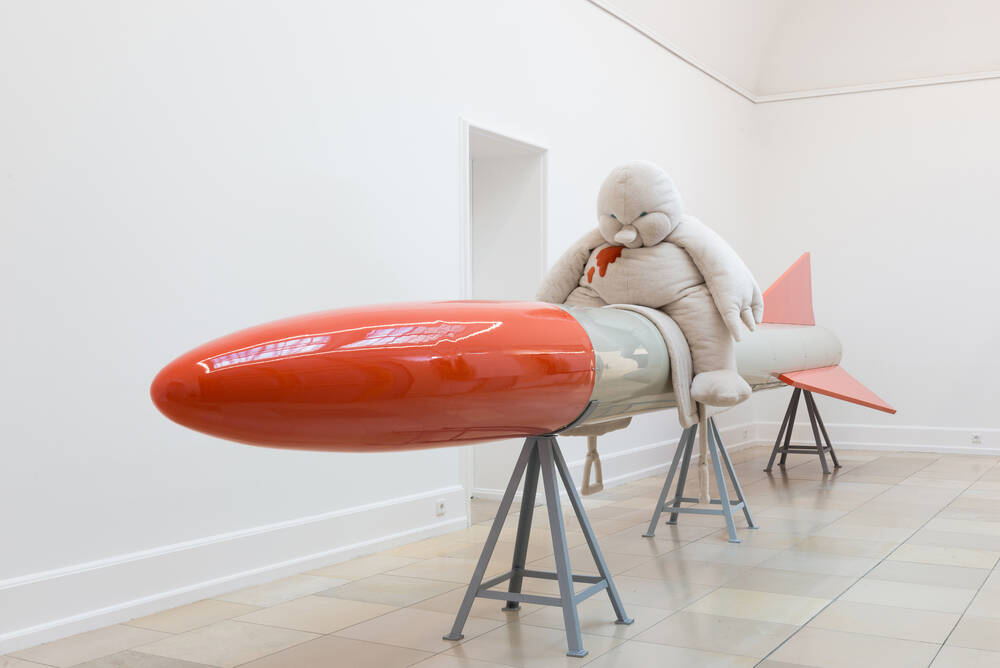
In Cosima von Bonin’s works, inherent contradictions and cryptic humor often enter into a play with words and images. For example, she makes use of a font often used in horror novels in her plastic sculpture "Cute (Pink Version)" (2018). Or the sweet contours of Bambi are combined with terms for psychological manipulation techniques employed in love relationships in the textile paintings "Gaslighting" and "Love Bombing" (both 2023).
The joy of failure
Daffy Duck, a protagonist known from comics and a key figure in her work, symbolizing the joy of failure, serves as a leitmotif throughout the exhibition at the SCHIRN. Characteristic of Daffy as a lisping, pugnacious nuisance is his egotistical and tireless character who always craves recognition. It is this that sets him up to fail time after time, while simultaneously motivating him to get up again and carry on. In the series "Open Your Shirt Please 1–9" (2019), Daffy Duck battles against the powerful black that threatens to force him out of the image. Unfazed, he keeps appearing on the surface. In recent textile works such as "Kalt Modern Teuer", "Emporkömmling", and "Social Climber" (all 2023), the anti-hero manifests a new sense of self-confidence. In the sculpture "Church of Daffy" (2023), he finally triumphs in the last room of the exhibition like a prophet with his hands raised and wearing a plaid loincloth. However, Daffy Duck has already stepped so close to the edge of his pedestal that he is in danger of falling. Next to him, in "Blame Shifting" (2020), a whole group of Bugs Bunnys are stuck upside down in a garbage can.
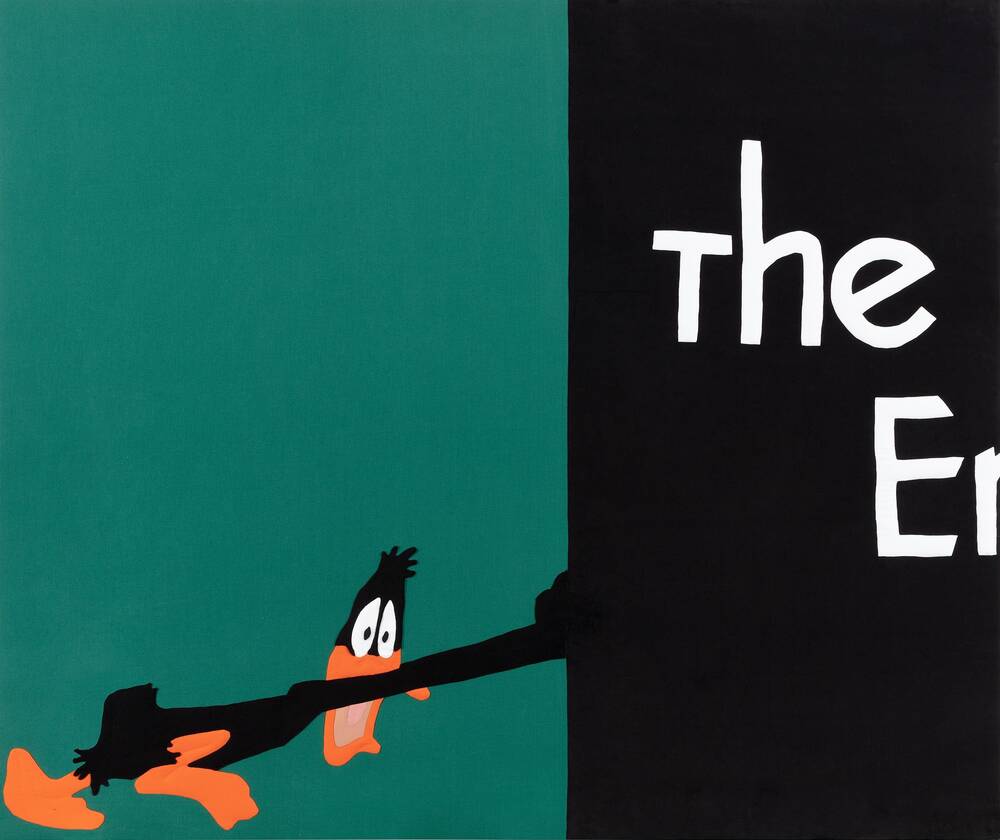
In her visual worlds, Cosima von Bonin regularly addresses the strategies of capitalism and marketing, the consumer world and the great need to belong to it. Her works often convey a state of tiredness and exhaustion, or they celebrate inactivity and laziness. They also express a rejection of the neoliberal work ethic and social rules. For example, three velvet-covered fabric fences from the series "Fence (Short Version, Long Version, Corner Version)" (2020) do not correspond to the idea of a protective boundary, but rather appear soft and cuddly. Similar to the fences, three illuminated sculptures resembling smoking cigarettes also make a nonconformist impression, signaling rebelliousness and idleness.
Other works in the exhibition, such as a group of twelve brightly colored, high-gloss painted rockets from the series "Loser" (2020–21), counter the pressure to perform and optimize oneself with smooth, hard surfaces that are motivated and standing upright. Yet the title "Loser" does not promise success. In another sculpture, "Kings of the B" (2019), two limp rockets are stuck in a cement mixer. Similarly, two fish called "What If It Barks 5 (Petite Version With Blue Ukulele)" and "What If It Barks 6 (Petite Version With Black Ukulele)" (both 2018) appear ready to break into song at any time, playing ukuleles in their stage outfits. Here, too, the first impression is ambiguous: one of the mackerels hangs the instrument around its body like a weight on a chain yet without making any music. It is this interplay of performativity, emotions, failure, and continuation that Cosima von Bonin creates in the exhibition as the sociotope of her art.
